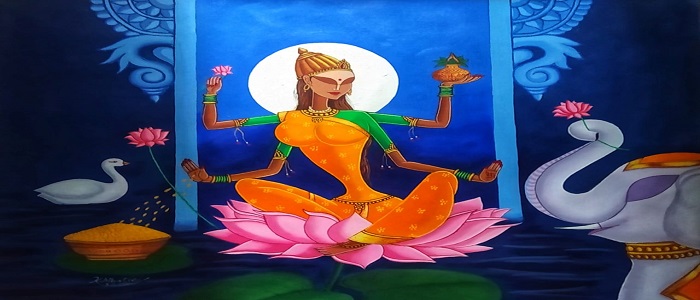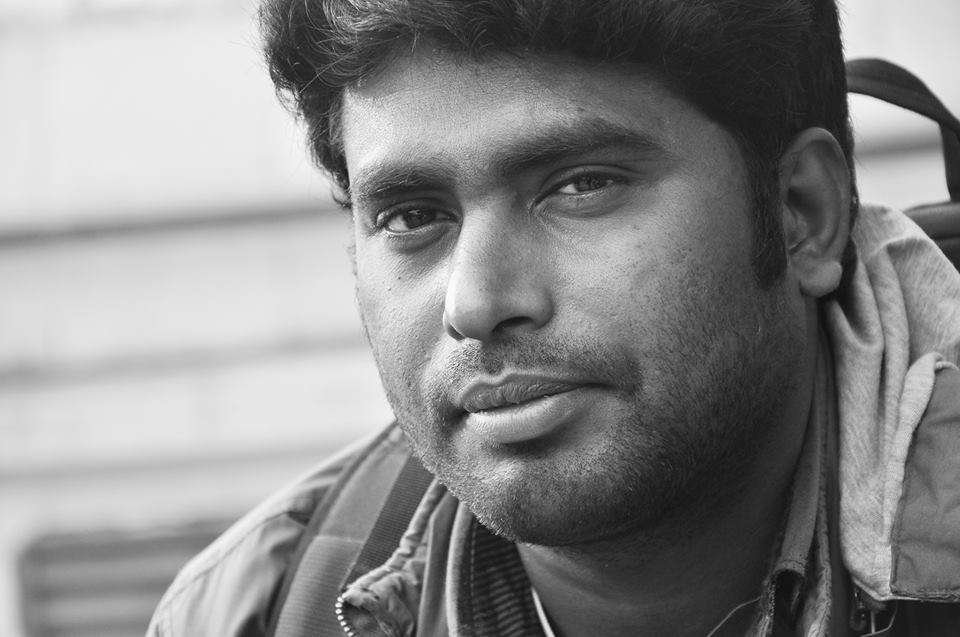
Lakshmi is a Hindu goddess who is also worshiped by Buddhists and Jains. Her prominence in the Hindu pantheon stems not only from her marriage to Vishnu (the Hindu trinity's preserver), but also from her own role as the goddess of money, prosperity, and good fortune. Though the depiction of Lakshmi Paintings in art varies significantly depending on the locale, local traditions, and artistic medium, there are some symbols linked with Lakshmi that distinguish her.
Prosperity and Wealth
Lakshmi is frequently depicted with four arms, as is customary for Hindu Gods. A blessing is symbolized by an outward-facing palm (typically the lower right arm). She could also be carrying a pot or sprinkling gold coins with one arm, implying material richness and abundance. The figure of Lakshmi has frequently decorated South Asian coins due to her link with riches. Many monarchs of Hindu and Muslim nations in South Asia struck coins depicting the goddess reclining on a lotus.
Flowers of the Lotus
Lotus blossoms are a Hindu symbol of purity and enlightenment, and they are regarded in high regard. Lakshmi is frequently depicted with one or both of her four arms holding a lotus bud. She can also be seated or standing on a lotus flower. Lakshmi is usually shown in temples as a lone standing figure holding a lotus bud in Cambodian art, although she is usually seated in Vietnamese art.
Gaja-Lakshmi
Lakshmi has also been linked to owls and elephants, in addition to lotuses. The picture of Lakshmi flanked by gajas or elephants splashing her with water is known as Gaja-Lakshmi (and sometimes with coins). Gaja-Lakshmi sculptures are regularly found in ancient ruins, and this icon has been found on both Hindu and Buddhist structures.
Vishnu and Lakshmi
Lakshmi was first referenced in the Rig Veda circa 1000 BC, and she was a venerated divinity even during the Vedic period of Hinduism (1750 - 500 BC). By the Puranic period about the 5th Century BC, most Vedic Gods had faded into obscurity, but Lakshmi's renowned reputation had not diminished. Lakshmi was connected with numerous gods and demi-gods, notably the hermit God Shiva, over time and before her foundation as Vishnu's eternal consort. These associations made Lakshmi appear changeable and restless, which Hindu scholars say is an analogy for the fickle and restless nature of prosperity or money.
She is frequently the smaller figure in her depictions beside Vishnu.
Lakshmi's Avatars
Lakshmi is known by several names and has been on Earth in many incarnations or avatars, often as the partner of Vishnu's various avatars, as is usual with Hindu Gods. Sita, Lord Ram's wife, and Radha, Lord Krishna's sweetheart, are two of her more notable avatars. In South Asian art, Sita-Ram and Radha-Krishna are also popular subjects.
Diwali, also known as Deepavali, is a five-day Hindu festival that is undoubtedly the most important annual event. On the Gregorian calendar, it usually occurs in October or November. Vishnu descended as Prince Rama of the mythical city of Ayodhya, and Lakshmi as his wife, Sita, according to the Ramayana mythology. The Ramayana recounts Ram's heroic battle to save Sita, and their subsequent return to Ayodhya after fourteen years of exile. The people of Ayodhya lit oil lamps in their homes to welcome their beloved prince and his wife back to the kingdom and wish them well.
Lakshmi paintings and the Festival of Lights
During Diwali, Lakshmi is said to walk the world, and devotees burn oil lamps in their houses to welcome her and her promise of good fortune and wealth. Lakshmi puja, or the ritual worship of Lakshmi, is traditionally performed on the first and third days of Diwali. During this time of year, Hindus believe that Lakshmi would bestow wealth and good fortune upon them, therefore spending (and recreational gambling) is prevalent.
Goddess Lakshmi is worshipped for blessings like riches, family homes, friends, a healthy harvest, and good health. She is worshipped either alone or in conjunction with Lord Vishnu. According to the Vishnu Purana Sri, also known as Lakshmi, is the mother of all beings, while Hari, also known as Vishnu, is the father. Narayana is the name given to Lord Vishnu. Lord Vishnu is the meaning if she represents speech. Lord Vishnu is the god of understanding, and she is the brains behind it. The gentle gaze of Goddess Lakshmi has the power to change fortunes and is highly sought after. She is represented standing or sitting on a lotus, which denotes beauty, fortune, and emancipation. She is regarded as possessing the Supreme Being's energy.
Gajalakhsmi or Lakshmi is generally depicted with elephants in padmasana on a lotus. Elephants flank her on both sides, pouring water over the Goddess with their trunks, symbolizing abundance and good fortune. She is frequently represented as four-armed, with one arm in Abhaya mudra (depiction of bravery) and the other in Varamudra (depiction of the fulfilment of wishes.)
Lakshmi's four hands represent the Hindu way of life's four goals: Dharma, Kama, Artha, and Moksha. The owl is Lakshmi's conveyance. She is constantly beautiful and brings riches to those around her. She is a symbol of economic activity. Her statues can be found all over South Asia in Hindu temples. She has been represented on ancient Indian coins. She is honoured at the festivals of Diwali and Sharad Purnima.
Wrap up:
Get some ideas for modern art and modern art paintings while you're thinking about redecorating your home. They'd not only brighten up your white walls, but they'd also brighten up your area with wonderful artwork.
While you get to learn about each element that a Lakshmi painting has- give yourself some time and learn about the Radha Krishna Paintings too. Hold on to the best experts and artists for some outstanding home decor paintings and artworks.
Let people reminisce about the idea of idealizing your house and office decor for some amazing ideas.
With Indian Art Ideas, you can get the best bargains on modern art paintings!





















